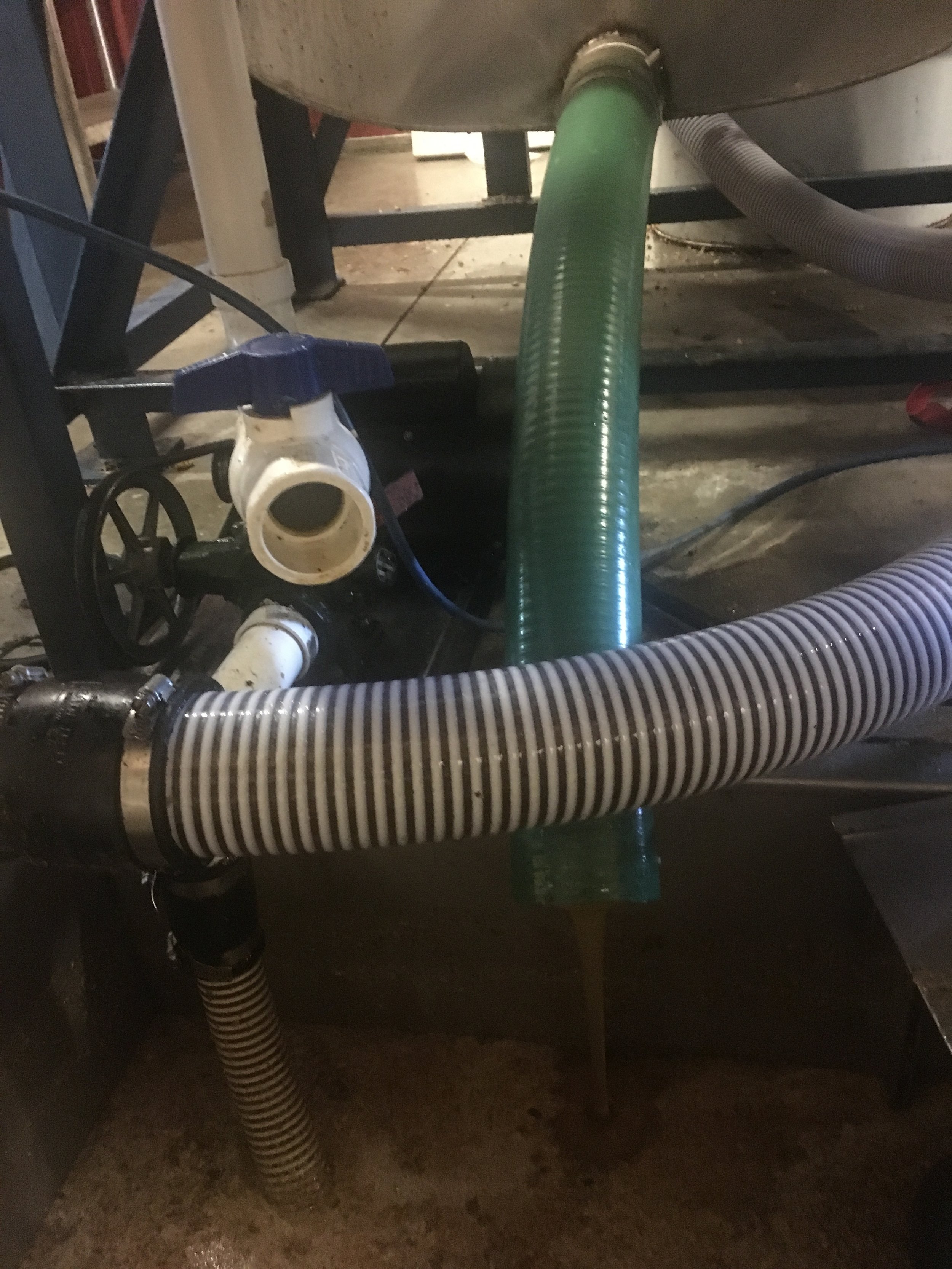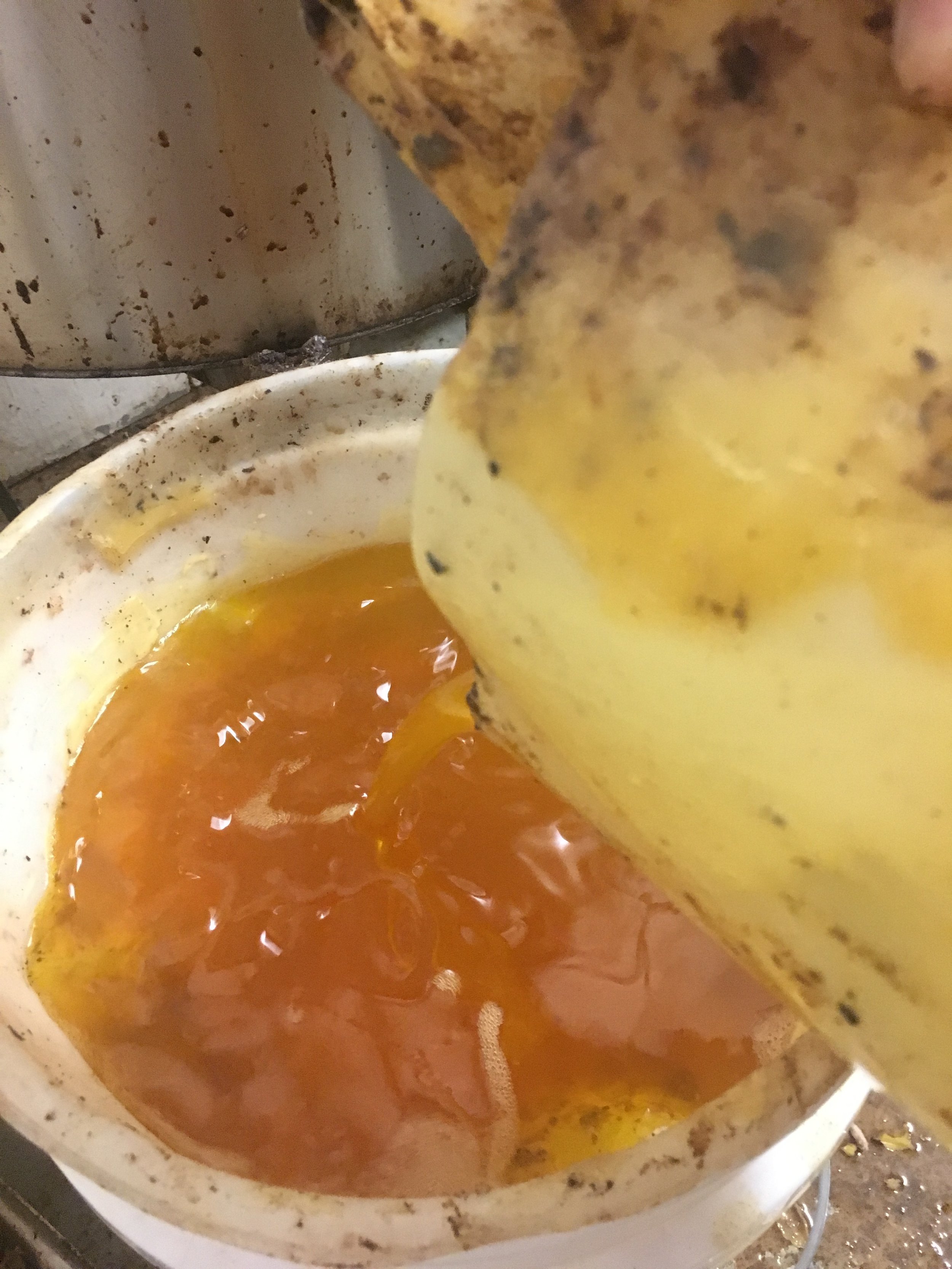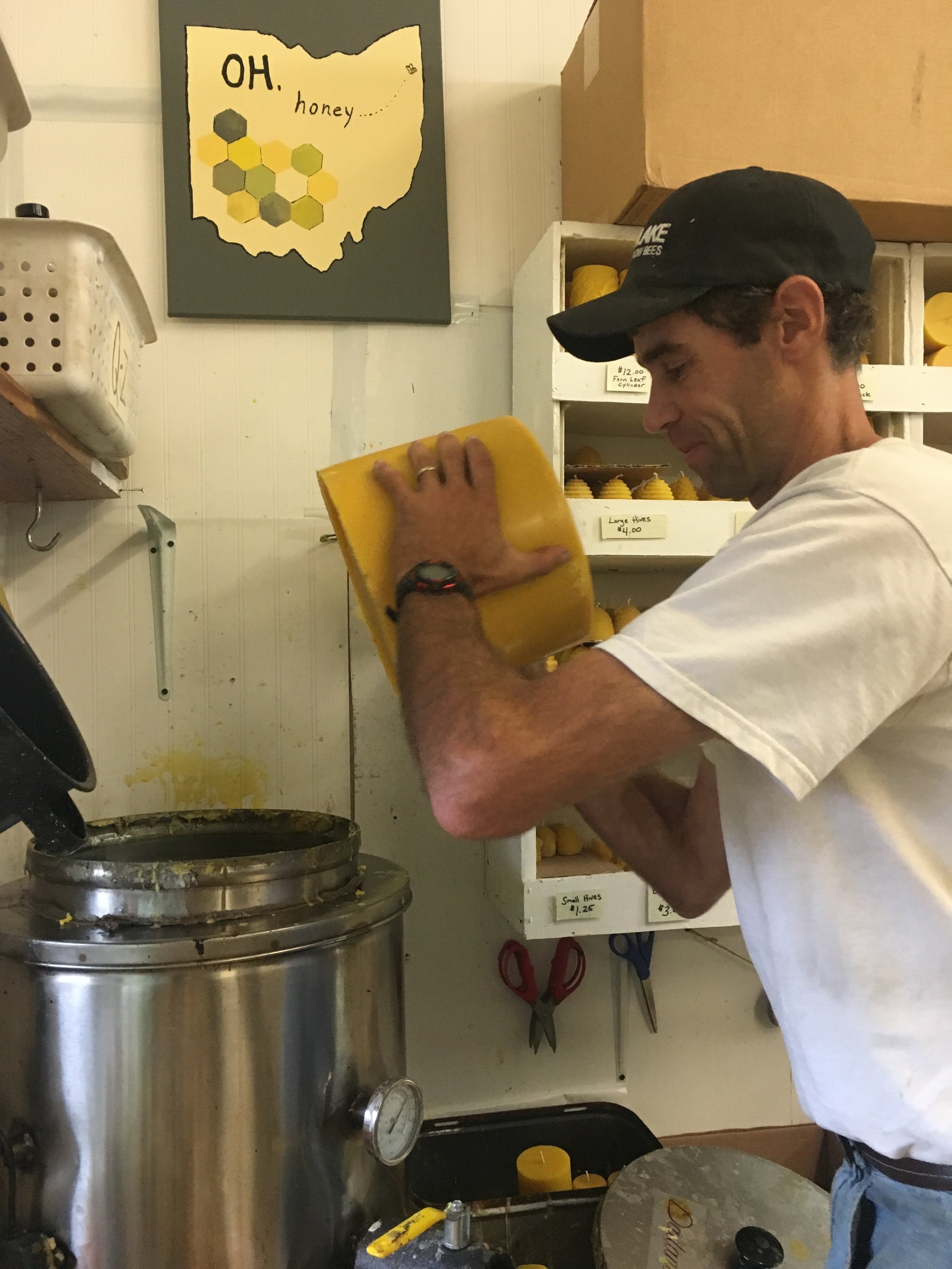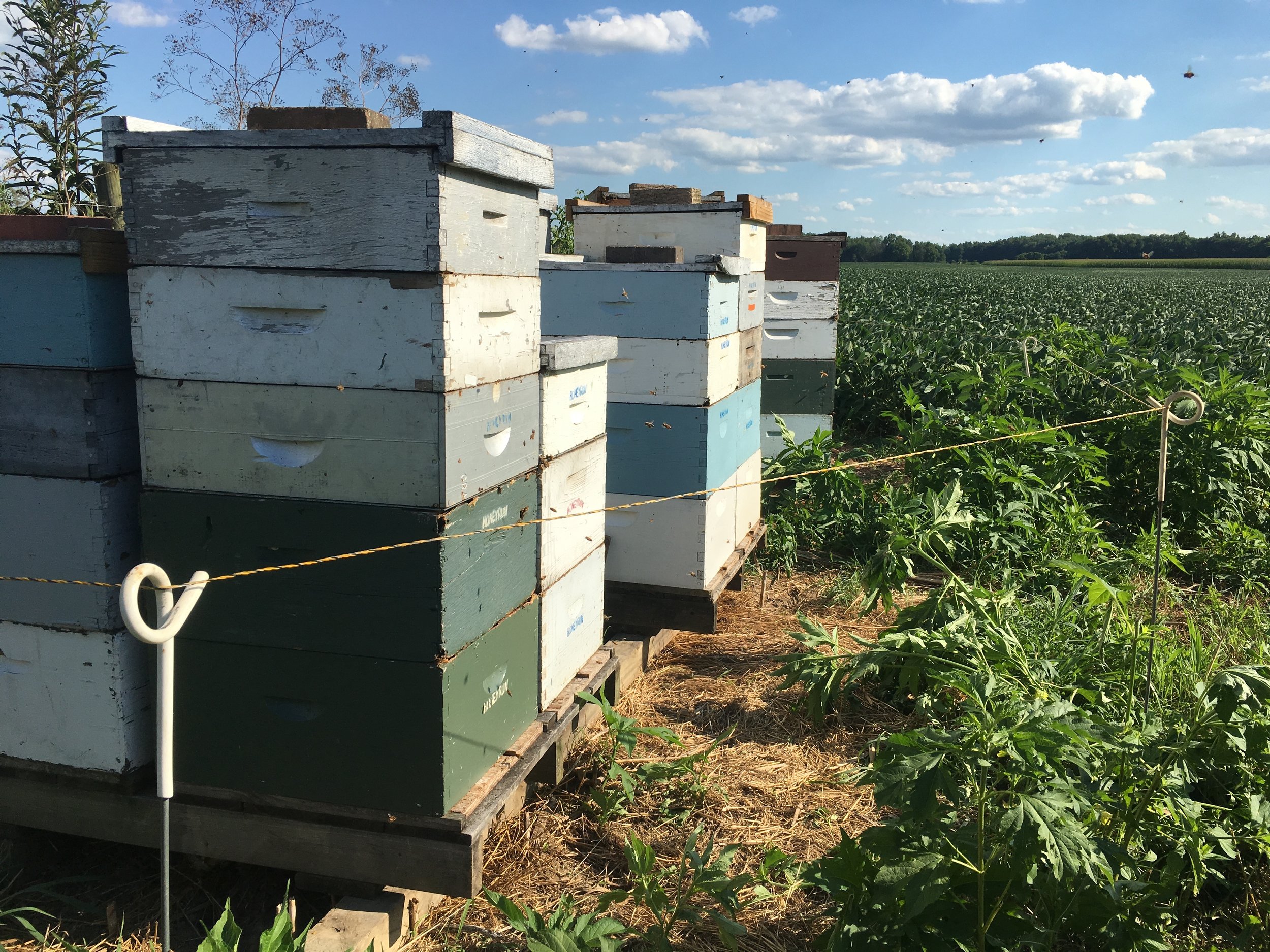Beeswax- From cappings to candles
Jayne Barnes
-Posted by Isaac
It's been done again and again. Some bright person finally sees the light and turns the direction of the entire business. They follow the money.
Not the case with us. We're still stubbornly keeping bees. But it's not like we're turning a blind eye to the possibilities...
How do you make real money in beekeeping?
Just looking around, paying attention to other business trajectories, it's easy to see the path. Very easy. I think I can sum it up in two steps:
1. Quit beekeeping.
2. Make candles.
(Or soaps, salves, lip balms, lotions, etc...) Have you ever heard of Burt's Bees? Root Candles?
Some bright person finally saw the light.
Years ago, Jayne requested that we devote at least a small corner of the bottling room to beeswax. That corner continues to grow:
And if we were smart, we'd turn the whole building into candle production. Too bad the Honeyrun beekeeper is still in love with bees.
For this post, I thought I'd show a little of the wax processing. This is the journey the wax travels from cappings to candles. If you'll remember from the last couple weeks during the honey processing, the first step is to remove the wax capping that the bees put on the comb. Once the honey frames go through the uncapper, a slurry of honey and wax builds up in a big hopper underneath.
About once an hour, that slurry is augured up into a wax spinner. The spinner has a big screen that catches the wax and lets the honey flow back down into the sump.
It also drys the wax. Basically it spins all day. At the end of each day, the tacky-dry cappings wax is scraped off the screen and collected in a barrel.
We start rendering the cappings when the barrel gets too full. Usually this is within a week.
Warning to beekeepers: if you wait a month or more, you'll have beetle larva in your cappings.
As the cappings melt, it separates. The pure golden wax is ladled off the top.
And poured through a bucket filter. This one is 200 micron.
The molds are then put in a freezer for a day. Or in this case, with the freezers full, the cooler room works.
It's a lot easier to pop those molds out when the wax is cold.
At this point, you've got a solid clean block of beeswax. To turn that wax into candles, it needs remelted. For years we used two small double boilers. Finally last year, some bright person (Jayne) saw the light and we bought a real wax tank.
Jayne caught me dunking.
So we now have a continual supply of liquid wax. When the candle molds are wicked and ready, the wax is simply ladled off the top and poured.
The beeswax side of the business is amazing. And continues to amaze me with each passing year.
Maybe someday this dumb beekeeper will see the light.



























































